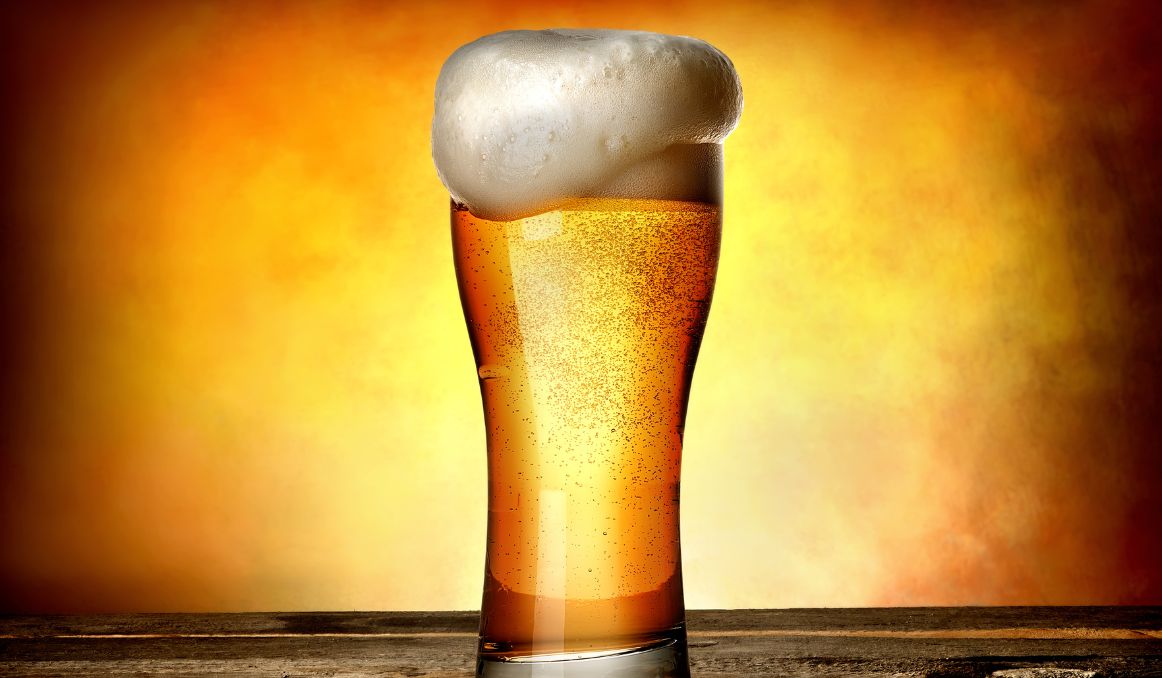Beer Head Retention Additives: What and Why?
All beer must have head. It is a simple reality of beer, whether we like it or not. If we are served beer at the bar and the beer has no head, we are instantly upset. It literally changes the nature of the beer. It is not wonder then, that brewers are desperate to ensure the retention of the head on their beer, and that they will seek out beer head retention additives when necessary.
But what are those beer head additives, and are they ever necessary?

What Is Beer Head?
Beer head, also known just as head, foam, or collar, is the foamy top of a beer when poured into a glass. It is created by the carbonation in the beer as it is poured from the glass.
Also read:
How much head should a beer have?
How to get good head retention in beer
The carbonation in beer is produced alongside the alcohol when the yeast enters the wort and ferments the sugars in the grain, but how tall the head is and whether the head is retained, that is, whether it stays on the beer once the beer is poured, has a lot to do with the grain and the brewing process.
Typically, wheat creates beer with a much larger head, much more foam, and barley has much less head, so brewers will often add wheat to a predominantly barley based beer in order to balance the size of the head. Further, wheat beers tend to have massively foamy heads, which can take away from the beer, so barley will be added to reduce that extreme height.
Another factor in the formation of head is the brewing. While yeast will create carbonation, that carbonation is likely to dissipate into the atmosphere if the beer is not instantly bottled.
Particularly in the case of beer that is filtered or pasteurized, by the time the beer will make it to storage, it has been exposed to oxygen enough that the carbonation is all but gone.
To remedy this, some brewers will add a bit of sugar to the beer right before bottling or kegging. This process is called “conditioning” or “priming.” Other brewers will force carbonate their beer as they bottle it, which involves feeding the beer through a carbon dioxide line as it enters the bottle.
Now that we’ve created head, we also have to retain it. You don’t want the head on your beer to go instantly flat. Typically, the head on beer is retained well for the duration of its enjoyment once it’s been poured thanks to the proteins and hop residue in the beer. While the yeast creates the foam, the proteins and the hop residue will lock that foam into the top of the beer and prevent it from dissipating, trapping the carbonation into the beer as well, keeping it crisp and fresh tasting while it is being enjoyed.
But why the stress on forming and retaining head?
Why Beer Head Matters
Unless you are a novice beer drinker, you are likely paying close attention to all the aspects of your beer. It really is a beverage that affects all five senses. You see the beer, you hear it pop open or pour into the glass, you smell it, you taste it, and you feel it in your mouth. It’s a whole experience, and beer head is a large contributor to that experience.
After all, it is the carbonation in beer that provides that satisfying “pffft” sound when the beer is opened. Your eyes instantly judge a beer based on the balance of beer to head ratio. And the foam on the top of the beer absolutely effects the way it smells, the way it tastes, and the way it feels in your mouth.
A flat beer is a wild difference from a well foamed beer.
And brewers know this.
Sometimes, though, brewers just can’t seem to get their head to remain in place once the beer is poured.
Beer Head Retention Additives

When this happens, and brewers are seeking solutions to beer head retention issues, the first things they look for are easy.
Clean glassware has a huge impact on beer head retention. A dirty or greasy glass will wipe out foam almost instantly.
The addition of high alpha hops is another way to ensure beer head retention as hop residue is a strong contributor of beer head.
Finally, a mix of carbon dioxide and nitrogen can also ensure you get better head retention as you are not relying solely on carbonation for foam.
If all else fails, brewers can add proteins and dextrins in the form of malts to their brewing process. These include crystal, wheat, flaked barley, and Carafoam, which will all contribute to greater head retention.
Be aware though, that as you add proteins, you will also be adding cloudiness. The penalty for more head may be more haze.
One other thing you can try is to increase the temperature during mash-in, up to 155 degrees Fahrenheit give or take a few degrees, which will provide your beer with longer dextrin chains, which improves head retention.
In the end, beer head retention is an experimental process, like any other aspect of this volatile process craft brewers have come to both love and hate. It may take a few shifts here and there, but of course there is no short cut to perfection.
And all the failures we undergo can simply be seen as steps on the road of progress.
Cheers!
Even the most perfectly shaped and resilient beer head cannot hide what has gone wrong in terms of flavor. For that, you need to keep a close eye on your yeast. If you’re interested in finding out how you can use our technology to control fermentation and monitor your yeast, save work hours and improve the cost-efficiency of your business, drop us a line at [email protected] or check out our product pages:
- Oculyze BB 2.0 (Better Brewing) Yeast Cell Counter App + Hardware
- Oculyze FW (Fermentation Wine) Yeast Cell Counter App + Hardware
Also, you can now get access to a fully functional demo account to test your yeast via our Web App. Completely free of charge and with no commitment to purchase.
Sources:


